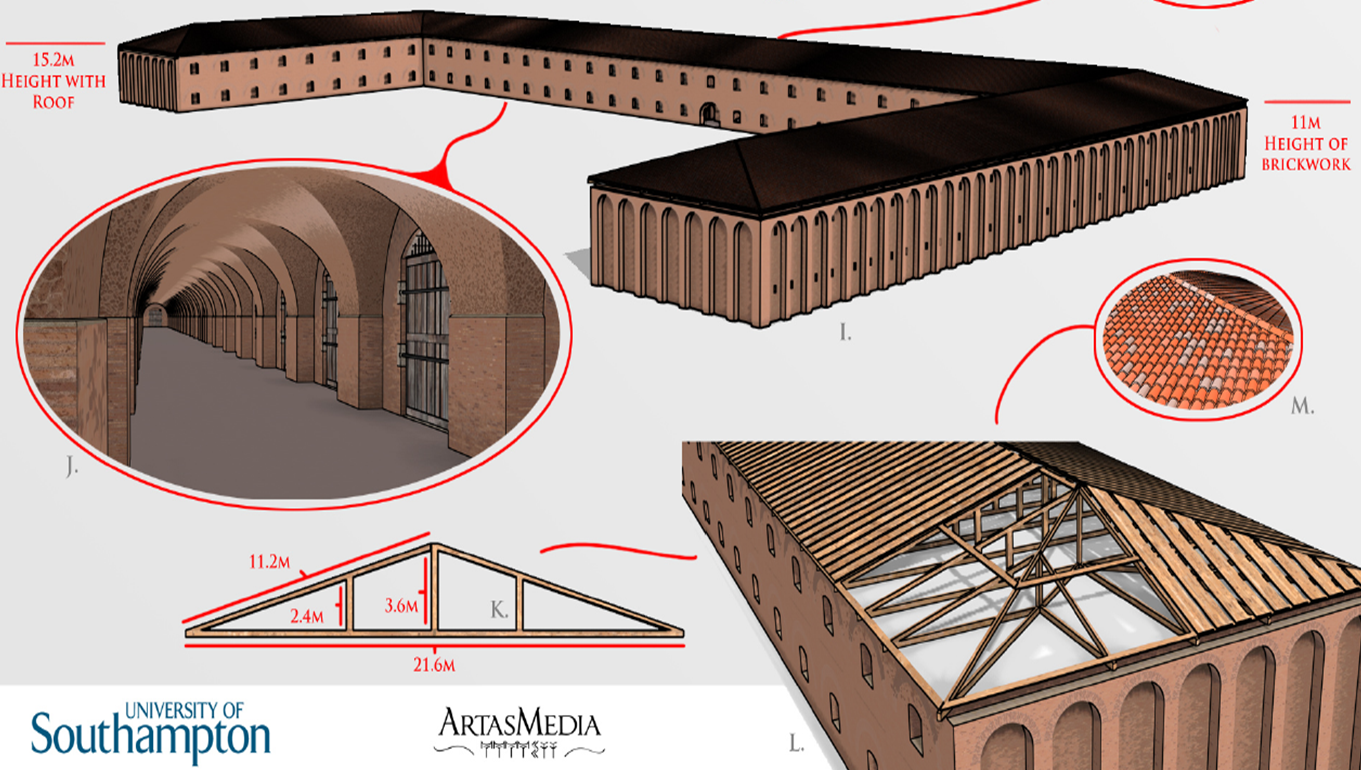Build your own Portus

I’m very excited about the imagination shown in the comments on the Archaeology of Portus: exploring the lost harbour of ancient Rome course. But it is clear that even at this late stage it is still hard to get a sense of space. We’ve worked hard to film as much as possible of the MOOC content actually on-site at Portus last summer, and you can see where this footage was filmed. Hopefully this week will also help. But unless you visit the site you are still a bit locked into your monitor, tablet or phone.
One approach we have already tried to minimise this dislocation is capturing spherical panoramas. Some phones and tablets allow these to be interacted with as if you were turning your head. Others give you a similar experience using a mouse. This works in giving you a sense of the different views, and is also helped I hope by the Flickr map. Still, I think it is harder to get a sense of scale. Some of you have already used ingenious methods, such as pacing out the size of a canal on your driveway or finding household objects similar to those we find at Portus. This is fabulous and please keep sharing these ideas – it is really helpful for us and for other learners.
But what do we do if we want to immerse you in the site as it is today, and as it was in the past? I would like you to imagine the buildings towering above you, to feel as though you are walking the streets and avenues in the footsteps of the Roman sailors, warehouse workers, slaves and traders that walked there two thousand years ago. You did this in textual form fantastically already in the First Century discussion in week one and in the Summary of the Week in week five, and it would be great if you continued to produce image or audio versions and share them on the Flickr group pool.
There have been a few discussions on Twitter via #buildyourownportus and in the course comments about digital ways to model the site, summarised and built upon by a post by Matthew Tyler-Jones on “The Portus MOOC and modelling“. His research focuses on digital interpretation of cultural heritage, and this post also describes the possibilities of Lego modelling. So, Grant Cox (the digital artist on the Portus Project) and Christina Triantafillou (the architectural expert) have produced the attached PDF file that provides enough information about one of our buildings – the Grandi Magazzini Di Settimio Severo – to create digital models of it. You could also use it to produce scale models in cardboard, Lego or other materials. We all think that modelling is itself an interpretative process and would be interested to know if you agree.
Download the Modelling Help Sheet PDF here.
(Note: You can learn more about Grant Cox’s digital modelling work at Portus via his ArtasMedia blog).
